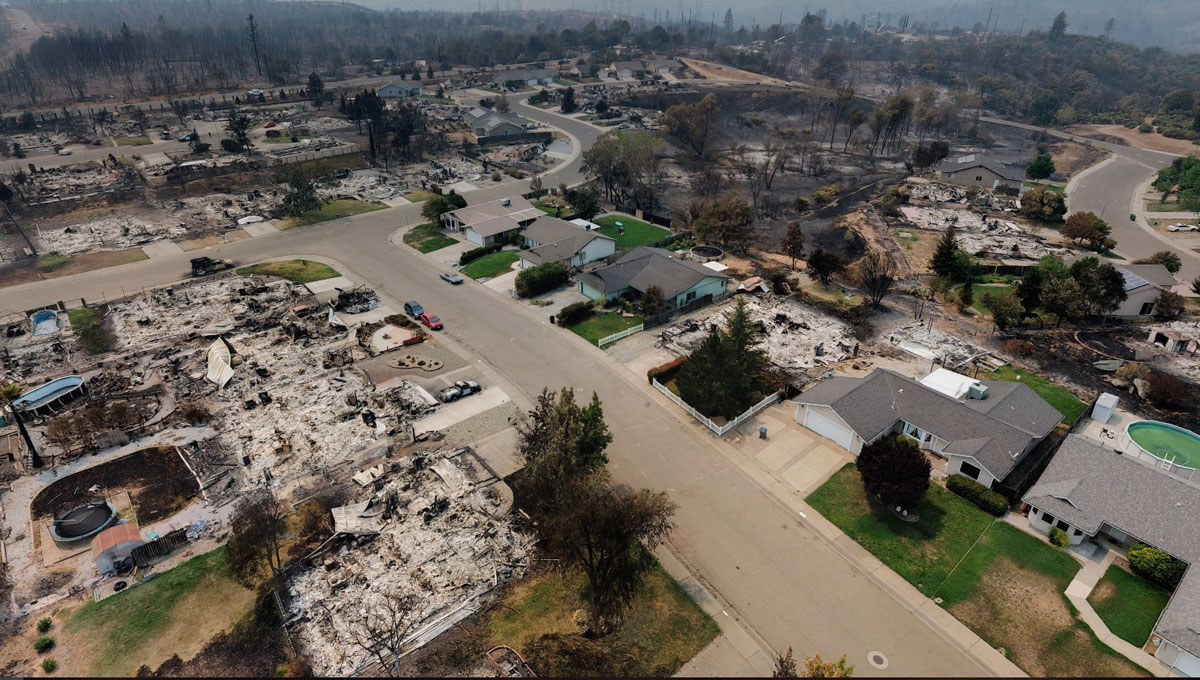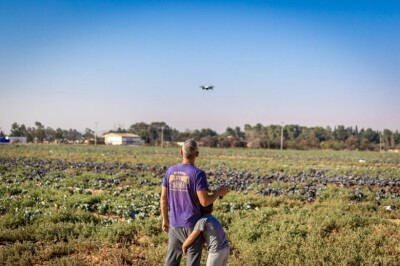After destroying more than 1,000 homes, causing 3 firefighter fatalities, and burning through more than 220,000 acres, the Carr Fire is considered the 6th most destructive fire in California’s history. California’s Menlo Park Fire District helped combat the fire not only with Strike Teams and Fire Units but also with drones.
On August 3rd, 11 days after the Carr Fire started, the Menlo Park Fire District partnered with Alameda County Sheriff’s Department, a law enforcement agency, to use drones for aerial damage assessments, mapping and documentation of affected areas. Both agencies started their own Drone Program in 2014, are certified under the Federal Aviation Administration, achieved a Certificate of Waiver or Authorization. They had previously worked together during Santa Rosa’s Tubbs Fire.
At last year’s South Fork Fire at Yosemite National Park, the two agencies flew drones to monitor the flames and see if they jumped containment lines. Additionally, drones provided real-time aerial imagery directly to the phones of the fire crews headed into the field for improved situational awareness and to help pinpoint suppression efforts. It was a process that occurred in the same way at the South-fork Fire in Yosemite last year, and many of those learnings and experiences were evident in the approach taken on the Carr Fire.
By flying between 150 to 200 feet in elevation for the Carr Fire, the drone teams were able to capture high-resolution photography and video imagery to create zoom-in, zoom-out, 360-degree, stitched together aerial mosaics of the damaged and destroyed areas. This provided homeowners with the “ability to send that information to their insurance company, or have it be used for reference by the State or Federal Government (FEMA) for claims by residents or the City and County themselves,” Menlo Park Fire Chief Harold Schapelhouman told Commercial UAV News.
The Fire District decided to adopt drone technology as “these are relatively inexpensive aerial platforms that currently provide several options to improve and enhance situational awareness, decision making, effectiveness and emergency responder safety,” Schapelhouman said. “It’s also about prioritizing airspace for public safety and emergency operations which is in the best interest of the public or common good.”
Since 2014, the department has used drones during hazardous material incidents, grass, timber and structure fires, along with missions above the San Francisco Bay, or flooded areas, and direct support of water rescues or recoveries.
Schapelhouman added: “We are very fortunate to be able to significantly fund our program with the ability to purchase the platforms and supporting systems, provide training opportunities and continually expand and support our program as we expand our use cases or the benefits of a UAS program.”
Although use cases such as this one show how helpful drones are in saving human lives and speeding up operations, there’s still a lot of skepticism about drone technology. To gain public acceptance, Menlo Park makes a conscious effort to frequently updated the Fire Board in public meetings.
“The Fire and Rescue Services has an easier climb and approval opportunities than their law enforcement partners,” Schapelhouman commented. “Our elected Fire Board was very supportive and we regularly update them.”
To keep up to date with the technology and learn how best to use drones to protect lives and property, the Fire District works with formal contractual partners like DJI.
“Our partnership and collaboration with DJI is helping to lead the way when it comes to advancements that directly benefit public safety and real-world fire and rescue operations”, Schapelhouman said.
For those departments that see the potential in drones for their community, but feel there are too many challenges for them to pursue adoption, Schapelhouman recommends “a plan and budget that includes goals and timelines as well as an application for a FAA COA, not just part 107. Getting a COA represents a higher bar, but it also forces you to legitimize your program. Part 107 can be your first step, but because pilots have liability under Part 107, I really think emergency responders need to focus on getting a COA.”
Right now, Menlo Park is working with the State to develop certifications, qualifications, training and typing for full integration and standardization of Fire Service UAS and Drone integration into emergency operations across the State for greater acceptance and use.















Comments